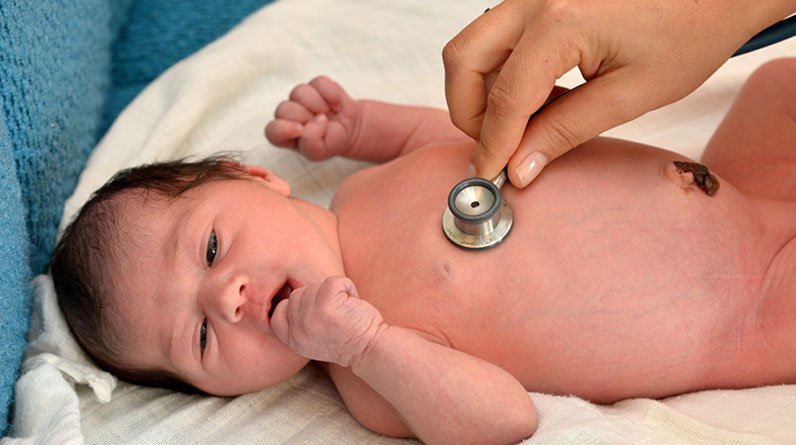
Congenital Heart Illness in Children
A multitude of different heart related conditions can occur during a human lifetime, and some of the most complex heart illness can occur during childhood. When babies are born, they can have specific heart conditions that develop during intrauterine growth. The heart normally forms in a standard way to function as the distributor of oxygenated blood to all areas of the body. Yet, in some cases, the growth of the heart and formation of particular aspects of the heart don’t occur in the standard way. This irregular growth and formation lead to the various congenital heart conditions that we will discuss in this content piece.
Heart illnesses are quite prevalent in children of all ages, presumed to be about every one in 100 children diagnosed with some type of illness, disease, or defect. Heart defects, in particular, are the most common birth defect in the United States, affecting nearly 40,000 births annually.
Because children with heart illnesses typically require a certain standard of medical care due to their evident health risk, pediatric heart illnesses can be quite complex.
In what follows, we’ll be discussing pediatric heart illness with a focus on congenital heart disease. We’ll be discussing the anatomy of the heart, the specific types of congenital heart disease, the signs and symptoms and diagnosis, the treatment of these conditions, and the outcomes of the various types.
Heart Anatomy
The heart has four different chambers. It has two upper chambers called atria, and two lower chambers called ventricles. They are further distinguished by the names left atrium and right atrium, as well as left ventricle and right ventricle. Each chamber connects to a blood vessel. The atria receive blood through these blood vessels, and the ventricles pump blood out of the heart through these blood vessels. Blood travels from each atrium into its corresponding ventricle. In between the atria is a septum and in between the ventricles is a septum. The various congenital heart issues involve several different anatomical parts of the heart.
Types of Congenital Heart Conditions
There are several types of congenital heart conditions, and they are often described as anatomical defects. The defect occurs because the embryological formation of the heart occurs differently in these individuals. The incidence of congenital heart defects is just under one percent of babies born in the United States yearly.
Ventricular septal defect is the most common heart defect in children. Other more severe heart defects that may occur at birth include Tetralogy of Fallot, Truncus Arteriosus, Pulmonary Atresia, Coarctation of the Aorta, Atrial Septal Defect, and Tricuspid Atresia.
The following is a discussion of some of these types of heart conditions:
Truncus Arteriosus
Truncus Arteriosus is the condition in which the main vessels that exit the two ventricles do not separate during formation. Babies born with this condition will have symptoms of cyanosis, which is blue or purple discoloration of the skin. They also will have rapid breathing and decreased levels of responsiveness.
Transposition Of The Great Vessels
The vessels that come out of the right and left ventricles go to different locations. The right ventricle blood exits the heart through the pulmonary artery, and the left ventricle blood exits the heart through the aorta. The pulmonary artery goes to the lungs, and the aorta goes to the rest of the body. In the condition of transposition of the great vessels, the vessels form in the wrong locations. The pulmonary artery comes out of the left ventricle, and the aorta comes out of the right ventricle.
Symptoms seen in babies with this condition include cyanosis, rapid breathing, poor feeding, and low weight.
Tricuspid Atresia
In the condition of tricuspid atresia, the valve between the right atrium and right ventricle never forms, and no blood passes from the right atrium into the right ventricle. As a result, the right ventricle doesn’t fully develop, and no blood gets pumped out into the lungs. Babies with this condition are also cyanotic and weak and tired. They also have shortness of breath.
Tetralogy Of Fallot
Tetralogy of Fallot is a congenital heart condition in which four different problems develop with the heart.
1. An enlarged right ventricle
2. Narrowing of the pulmonary artery where it exits from the right ventricle
3. A ventricular septal defect (hole between the two ventricles)
4. Aorta “overrides” both the left and right ventricle, and blood exits out the aorta from both the right and left ventricles
Babies with this condition have cyanosis that often occurs during feeding. Sometimes a murmur or abnormal heart sounds exist in babies with this condition.
Patent Ductus Arteriosus
A patent ductus arteriosus is defined as the continued blood flow through a small vessel connecting the pulmonary artery to the aorta after birth. This small vessel forms during heart formation to allow blood to mostly bypass the lungs since they don’t function while the baby is in the uterus. If the ductus arteriosus does not close normally after birth, too much blood flows into the lungs, and the lungs and heart have to work harder.
Babies with patent ductus arteriosus experience shortness of breath and poor weight gain.
Treatment of Congenital Heart Conditions
The treatment for the various congenital heart conditions is surgical. Based on the various defects, a pediatric cardiovascular surgeon will perform a repair of holes, the separation of large vessels, the creation of new vessels, the removal of vessels from certain locations, the creation of new heart valves, and other procedures. It is quite a complex array of surgical options; however, the success rate for these various procedures is quite high, and individuals go on to live normal healthy lives.
Final Thoughts
Congenital heart defects usually require rapid attention. Some conditions are more life threatening than others and must be treated with surgical repair. Once the condition is treated, the long-term outlook of these conditions is good, with most individuals going on to live completely normal and healthy lives.
